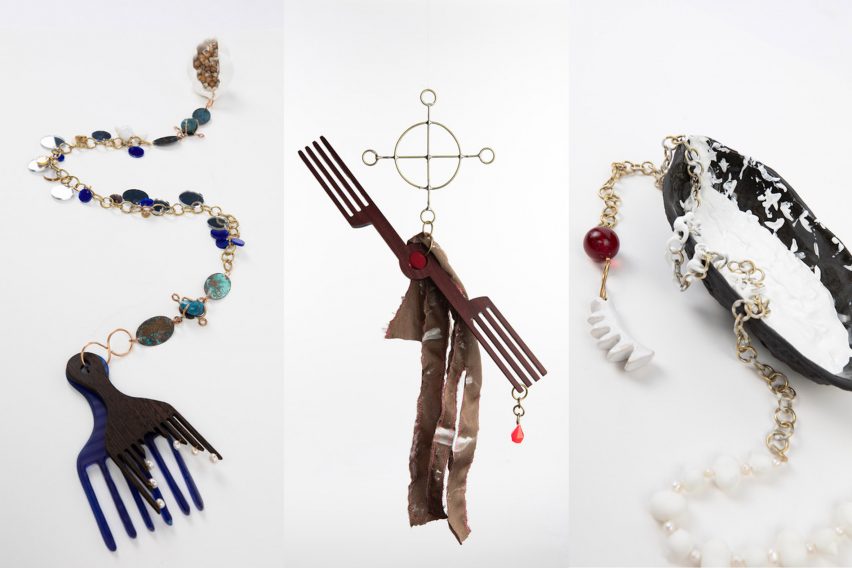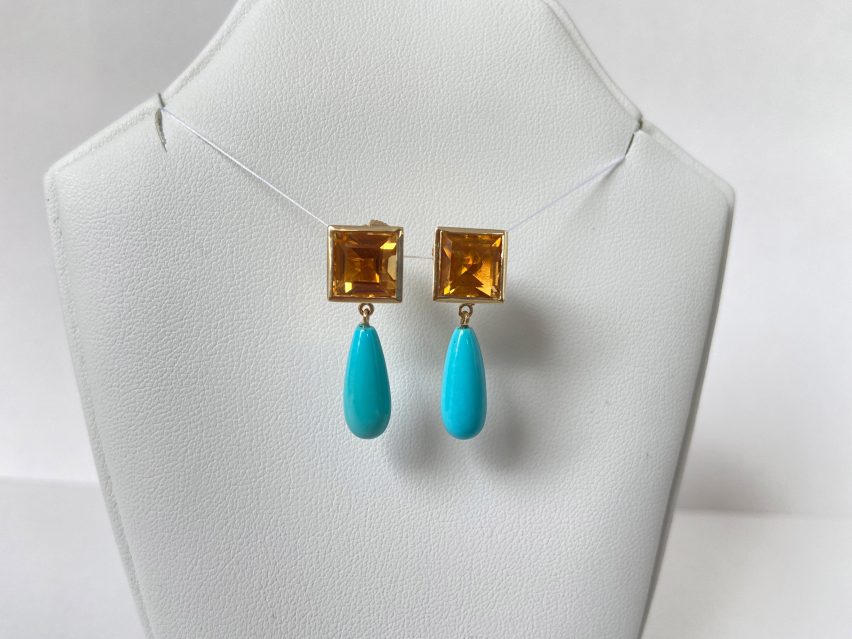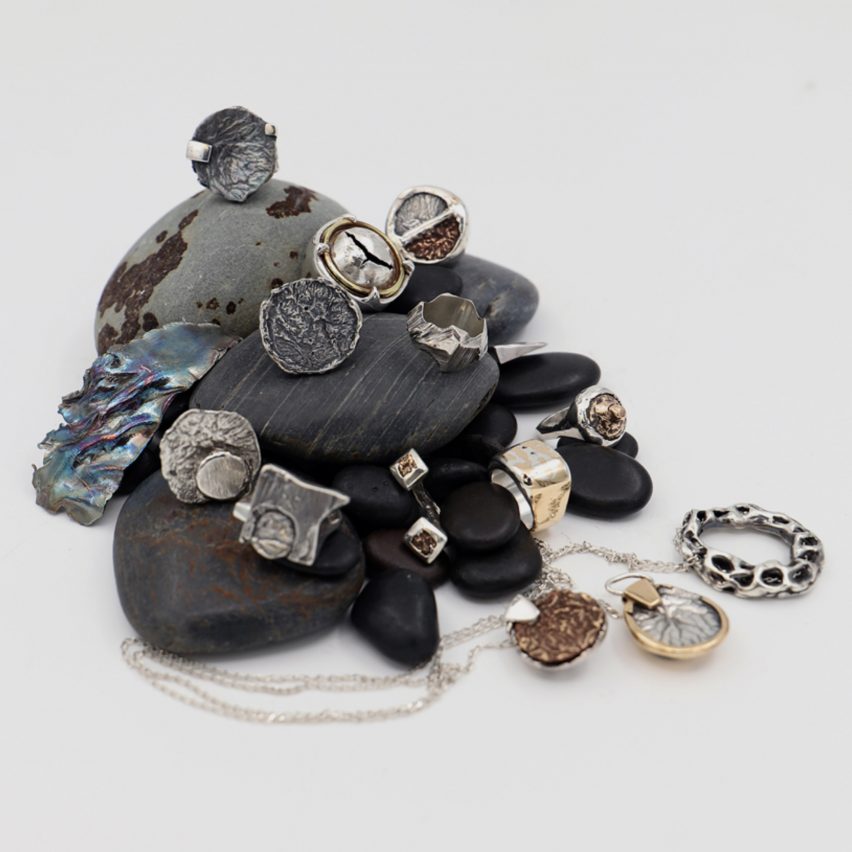
Six student jewellery design projects that explore identity
[ad_1]
Dezeen School Shows: we’ve picked six student jewellery design projects featuring in Dezeen School Shows that represent the personal identity of the designer.
These fine art, silversmithing, product and jewellery design students have created jewellery items that express, celebrate or comment on a variety of socio-cultural topics.
This roundup includes neckpieces that reference African culture, jewellery items that combine modern and traditional craft techniques and accessories that draw on popular culture.
The selection of projects come from fine art, product design, jewellery design and silversmithing courses at international institutions including University for the Creative Arts, Design Institute of Australia, ArtEZ University of the Arts, Istituto Marangoni London and Lucerne School of Art and Design.

Embracing Black by Fleuri La Belle Ngapy
During their time studying product design, Fleuri La Belle Ngapy created a range of jewellery for people with African ancestry that aims to reconnect wearers with their heritage.
The designs draw on traditional amulet chains and feature afro combs alongside metal detailing and coloured beads.
“Growing up mixed Dutch-Congolese in the Netherlands, Ngapy never had much connection to their Congolese roots. This project is about embracing their African roots and skin colour,” said Ngapy.
“As a person of colour, Ngapy has often felt out of place in the white, western-dominated world. They made a series of amulet chains that represent ancient Congolese cosmology and spiritual paint rituals for the wearer to embrace their skin colour and African ancestry.”
Student: Fleuri La Belle Ngapy
School: ArtEZ University of the Arts
Course: Product Design ArtEZ

Tree Imprints by Maria Jantina Geuke
Student Maria Jantina Geuke took cues from the structure of trees, tattoos and nature-based religions among other sources for her collection titled Tree Imprints.
She used a combination of contemporary 3D printing technology and traditional craftsmanship practices.
“The pieces encapsulate a raw piece of pine to worship the material world and as a symbol of how precious nature is,” said Geuke. “The pinewood is turned into tattoo ink through a burning ritual, fusing the tree with the skin as a permanent reminder that we are part of nature.”
Student: Maria Jantina Geuke
School: ArtEZ University of the Arts
Course: Product Design ArtEZ

Jewellery design student Emily Playne uses responsibly-sourced and ethically-processed gemstones in their Chrome collection.
The pieces centre on the form and colour of each stone and pay close attention to their composition within each piece.
“Playne curates their fine jewels as an artist would paint a blank canvas by using colour, form and shape,” said Playne. “Each jewel is embedded with a sentimental value establishing a deeper connection only felt by the wearer.”
Student: Emily Playne
School: Istituto Marangoni London
Course: MA Fine Jewellery Design

Fine Art student Lorissa Toweel created a collection of bronze, brass and silver rings and necklace pendents that are a byproduct of the interaction between maker and material.
The pieces are the result of one of two central methods – fabrication and lost-wax casting – which result in experimental and incidental aesthetics and forms.
“[My] work represents her vision and the collaboration between material and maker. Pieces are reimagined and fashioned into wearable objects where flexibility, brittleness and fluidity are honoured in each casting,” said Toweel. “[My] design approach represents a unique and open attitude towards sustainability and collaboration.”
Student: Lorissa Toweel
School: Design Institute of Australia
Course: Bachelor of Fine Art at Queensland College of Art Griffith University

Hyper-Femininity – Mean Girl does Jewellery by Shari Eva Kalmar
Shari Eva Kalmar created a collection of “subtly exaggerated accessories” based on the 2004 film Mean Girls during their time as a jewellery design student.
The pieces explore the stereotypes surrounding hyper-femininity by exposing certain aesthetics and behavioural traits associated with feminine culture.
“By exploring the visual attributes of these stereotypes and considering how they relate to character traits and patterns of behaviour, subtly exaggerated accessories have been developed,” said Kalmar. “Emphasising different materialities – real hair, faux fur, mother-of-pearl – body parts and ways of wearing them, preconceptions about hyper-femininity were elaborated to encourage an unbiased perspective on present-day images of femininity.”
Student: Shari Eva Kalmar
School: Lucerne School of Art and Design
Course: Bachelor XS Jewellery

Jewellery and silversmithing student Hannah Norris designed large-scale neckpieces that comment on the notions of wealth, class and other societal structures.
Chains are made from unique materials including graphite and soap, and feature exaggerated charms that deepen their symbolic meanings.
“The choice of material is important physically, visually and symbolically. Often carved, the selected substance is familiar, yet presented in an unfamiliar way,” said Norris. “The chains are over-sized and challenging to wear owing to their transient nature. But they also ameliorate each other – the current series of neckpieces of graphite, soap and holy wafer represent ideas of sin, repentance and absolution.”
Student: Hannah Norris
School: University for the Creative Arts
Course: BA (Hons) Jewellery & Silversmithing
Partnership content
These projects are presented in school shows from institutions that partner with Dezeen. Find out more about Dezeen partnership content here.
[ad_2]





